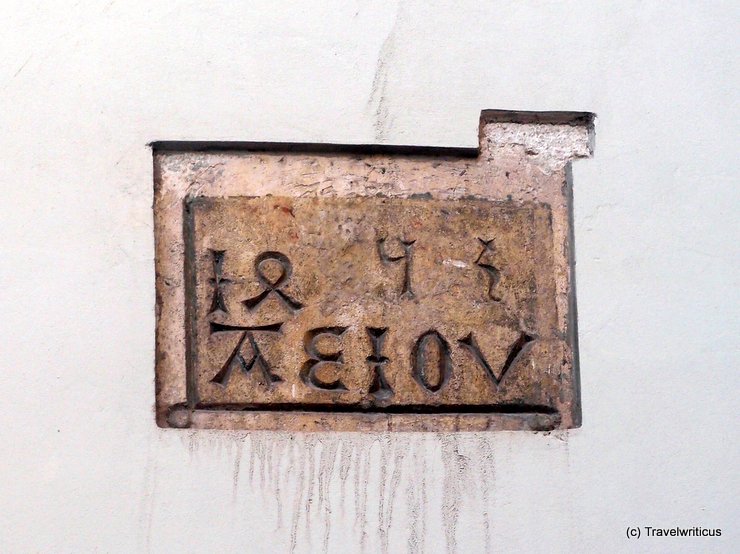
There are a lot of signs in Graz mentioning the string A.E.I.O.U. Habsburg Emperor Frederick III used these vocals to mark his buildings while staying in Graz. The meaning of this string is still unsolved. [German]
You only see what you know (Goethe)

There are a lot of signs in Graz mentioning the string A.E.I.O.U. Habsburg Emperor Frederick III used these vocals to mark his buildings while staying in Graz. The meaning of this string is still unsolved. [German]
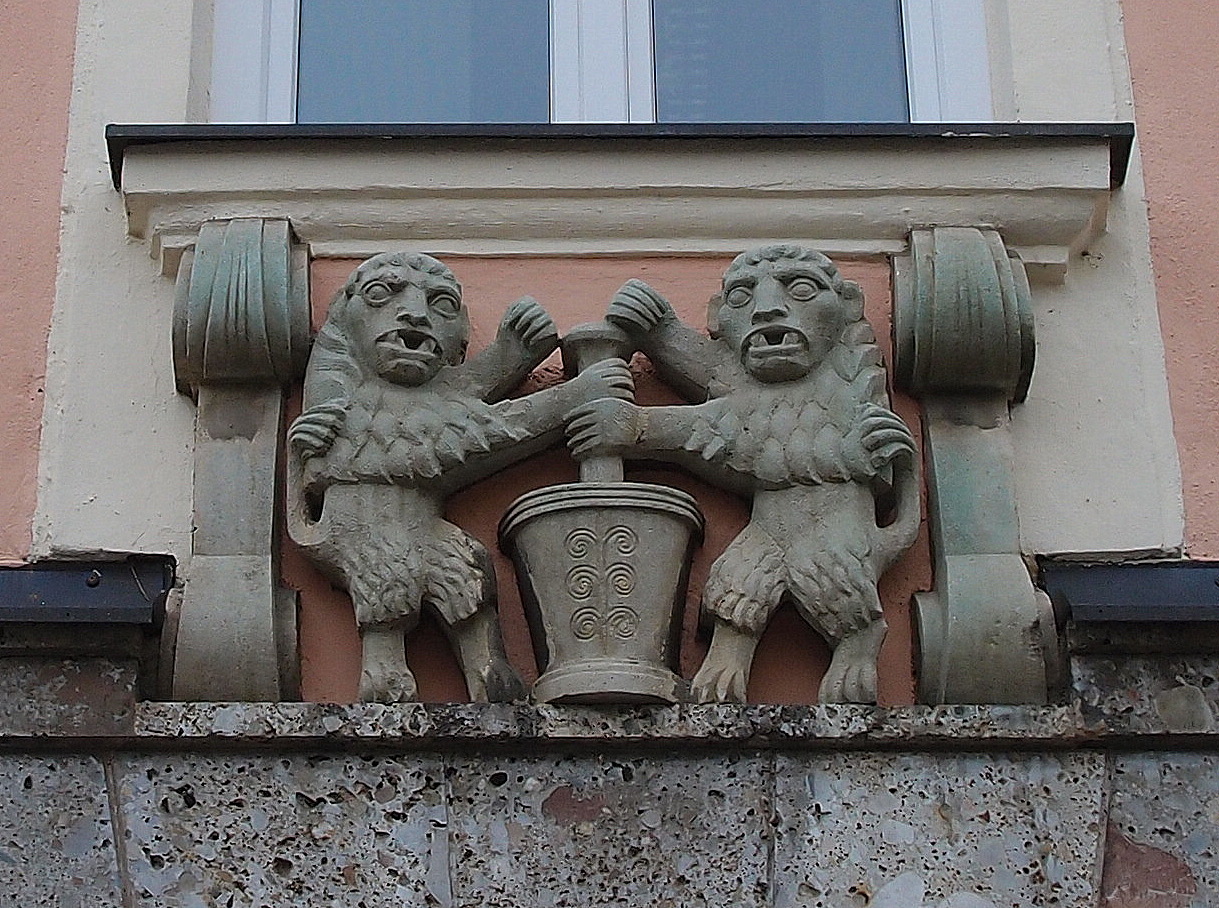
This house sign is located at the former location of the town pharmacy in the building Hauptplatz No. 10. Since 1674, a gingerbread baker has been proved here. A pharmacy started to run in 1841. The house sign dates from the 19th century. [German]
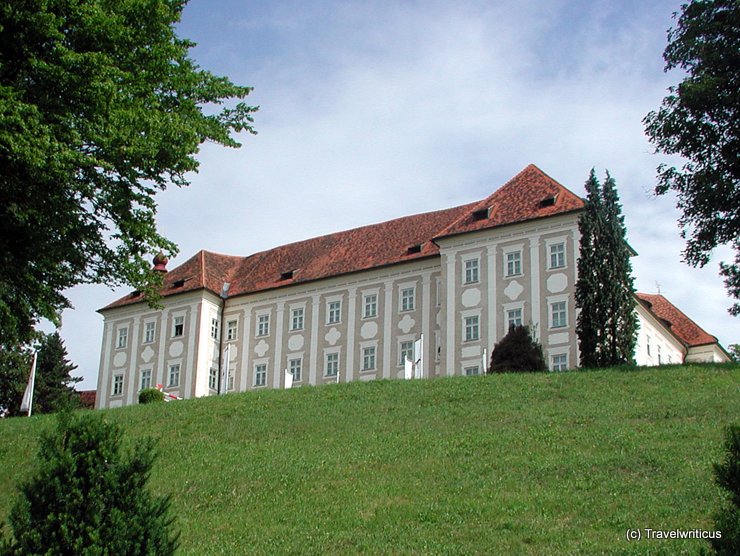
Piber Castle (Schloss Piber) is a palace in the Austrian state of Styria. It stands next to the Federal Stud Piber. The stud breeds the famous Lipizzan stallions performing at the Spanish Riding School in Vienna. [German]
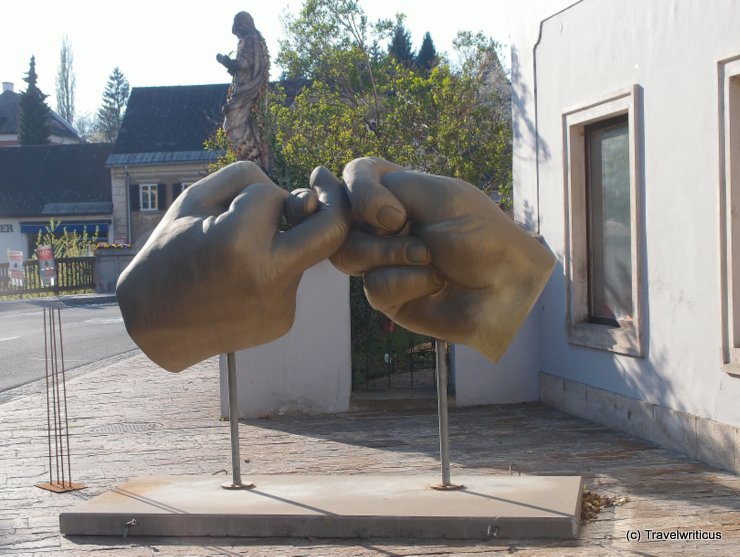
On a sunny spring day in 2012, I came across this sculpture in Ehrenhausen. At first view, it looked like public art portraying something fictitious. But this is wrong. It stands for a real sport with official championships: Finger pulling.
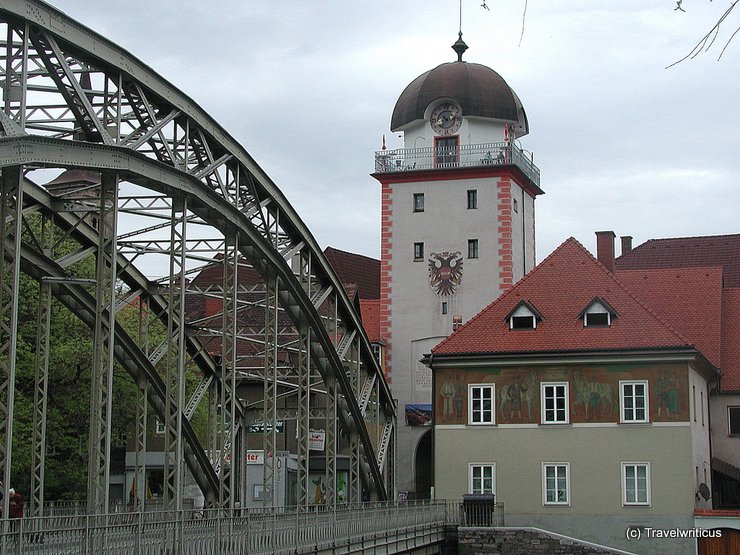
Master builder Peter Carlone built this tower in 1615. In the beginning, the name of this building referred to its function. It was called Mautturm (toll tower). After getting its unique roof in 1794, the name Schwammerlturm (mushroom tower) became common.

In this summer house formerly owned by Josef von Eggenwald (Eggenwaldsches Gartenhaus), the Peace Treaty of Leoben was signed between the Holy Roman Empire and the First French Republic on April 18th, 1797. This signing was an important event at the end of the “War of the First Coalition”. [German]
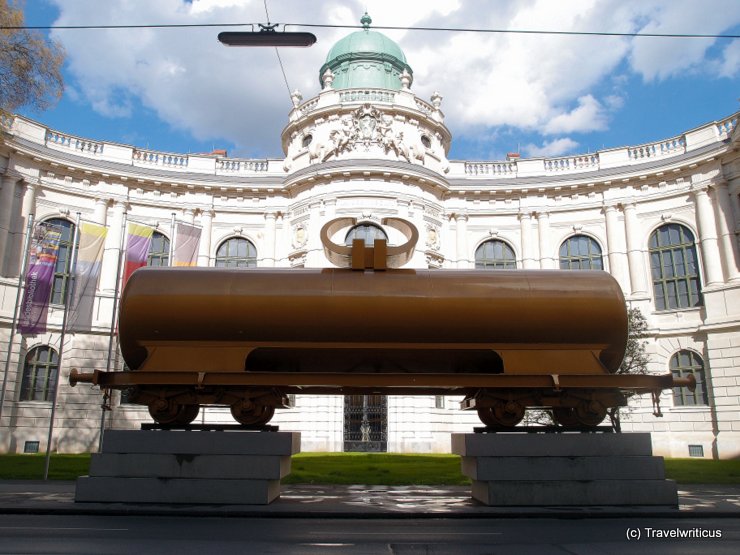
Some years ago, I saw this artwork near the Neue Galerie in Graz. The creator of this piece was Hans Hollein (1934-2014). The striking name of this work with several profound allusions: The Golden Calf (Das goldene Kalb). [German]

I am a sucker for wrought ironwork. On a walk through Graz, I discovered this image of a praying mantis (Mantis religiosa) as a decoration on a house entrance. What might have been the motivation for this work of art? [German]

The electric locomotive Class 1099 was produced in 1910-1914 for the particular needs of the narrow-gauge Mariazell Railway. There, they were in operation for regular schedules until 2013.

At the Schell Collection, also known as the Museum of Keys (Schlüsselmuseum), you learn a lot about keys, locks, chests and jewellery boxes. Another focus is on decorative ironwork. So you see a compilation of house signs, grave crosses, windows and doors. [German]
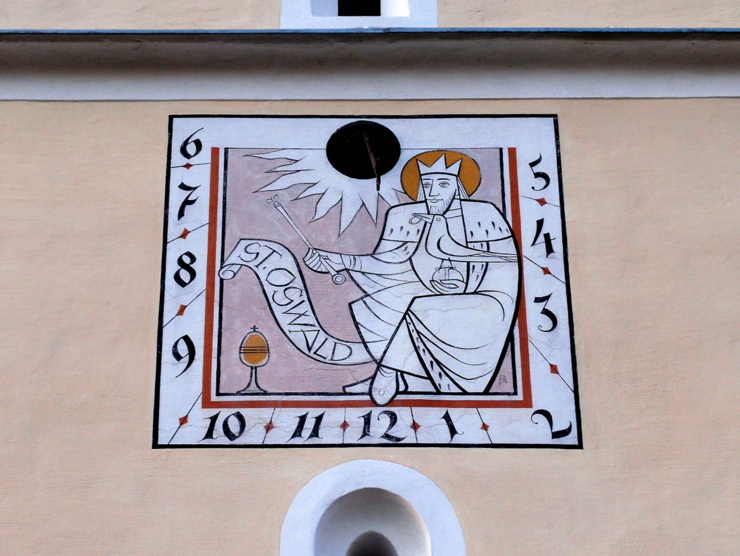
This sundial at the parish church of Puch bei Weiz shows Saint Oswald with a raven in his hand. The church is consecrated to this saint, who ruled as a King of Northumbria in the years 634-642.

The Lössl-Uhr (Lössl Clock) is a technical gem in Bad Aussee. The public clock designed by Friedrich von Lössl used to work with the power of changes in atmospheric pressure and temperature.